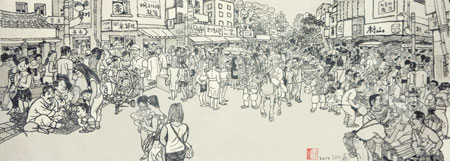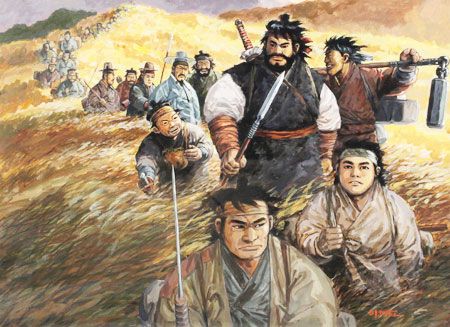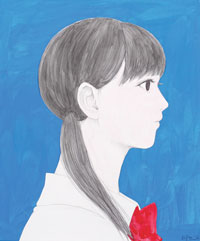Original paintings of Korean cartoons on exhibit
Korean cartoons, better known as “manhwa,” began with the influence of the Western world but they have later grown with a unique style that emphasizes such Korean traditional aesthetic elements as margins and lines.
The Korean cartoon industry is now enjoying a golden age with the surge in popularity of web cartoons. It is now regarded as an independent art after lounging for a long time as the culture of the low class or entertainment for children.
Various comic strips and illustrations based in various platforms are to show off the Korean cartoon identity and culture at an exhibition titled “Manhwa Story & Painting: The Colors of Manhwa” from Jan. 23 to 28 at the Insa Art Center, central Seoul.
Organized by the Korea Creative Content Agency, the exhibition toured Tokyo, Beijing, London and Los Angeles before arriving in Seoul for the finale.
The exhibition will present 47 original paintings by 19 celebrated Korean comic book artists such as Hyung Min-woo, creator of the world-renowned work “Priest,” which was adapted into a Hollywood film; Suk Jung-hyun known for “The Ghost” (2006), Chae Jeong-taek who was awarded the Korean Wave Animation Fund for “Mr. Kimchi” in 2012.

“Lee Hee-jae’s “Insa-dong” will be shown at the exhibition titled “Manhwa Story & Painting: The Colors of Manhwa” from Jan. 23 to 28 at the Insa Art Center, central Seoul. / Courtesy of Korea Creative Content Agency
The first Korean comic strip titled “Illustration” by Lee Do-young was published on the launching issue of “Daehanminbo” on June 2 in 1909. It began to flourish in earnest as newspapers used them to differentiate their product from 1920s to the mid-1950s. “Bomulseom,” a cartoon magazine, was launched in the early 1980s, ushering a graphic novel era in children’s comic books. The launch of “Bomulseom” boosted the cartoon industry but soon came under pressure on its social satires and criticism from the military government.
The cartoon industry then fell into decline because of government pressure, mainly serving children readers. From the 1990s, cartoonists who grew up reading Japanese cartoons emerged, driving the industry into the lucrative entertainment business that later featured films and games.
In the 2000s, with the advent of the Internet, the genre has gained the momentum to bloom. Since then, Internet cartoons became an alternative to paper magazines, as anyone can be an artist who can post their comic works and create a wide fan base there.
“Cartoons are a comprehensive art form which includes writings and paintings. I think the genre is our solid cultural content which has enriched not only cultural but also industrial sectors in a 100-year history. We hope this occasion would raise the awareness of artistic values of the cartoons to the public and help the original paintings as competitive cultural content both at home and abroad,” the agency said in a statement.
“We want people to pay attention to the artistic values of the original paintings to lay the foundation for helping them make inroads into the art market and diversify their profit making channels,” the agency said. The previous overseas exhibitions sold more than one third of the paintings on the exhibition, according to the agency.
The exhibition consists of three themes — internationally acclaimed artists; cartoonists of artistic paintings; and web-based cartoonists.
The first section features Lee Doo-ho, Lee Hyun-se and Hyung Min-woo who are internationally known for their works. Cho Kwan-je, Lee Hee-jae, Kim Gwang-sung, Choi Ho-chul and Jung Chul will show their artistic paintings in the second section. Ha Il-kwon, Studio Mental Rope, Kim Woo-jun and SAAK who are extending their scope through the Internet-based platforms will show their illustrations in the third section.
Admission is free. For more information, call (02) 736-1020 or visit www.manhwa101.kr. <The Korea Times/Chung Ah-young>



























































